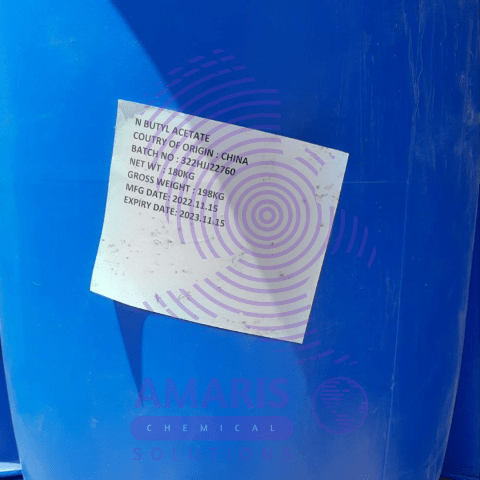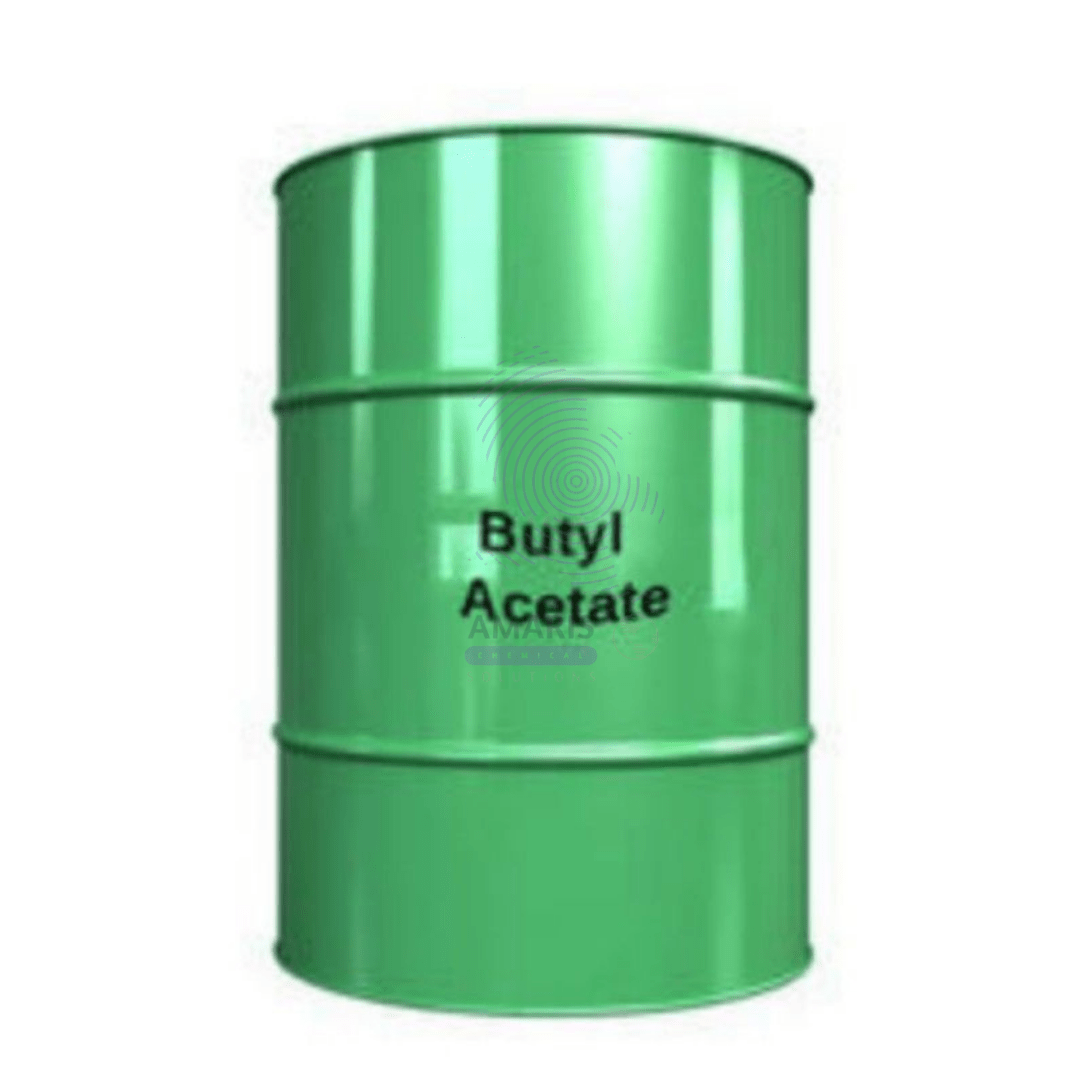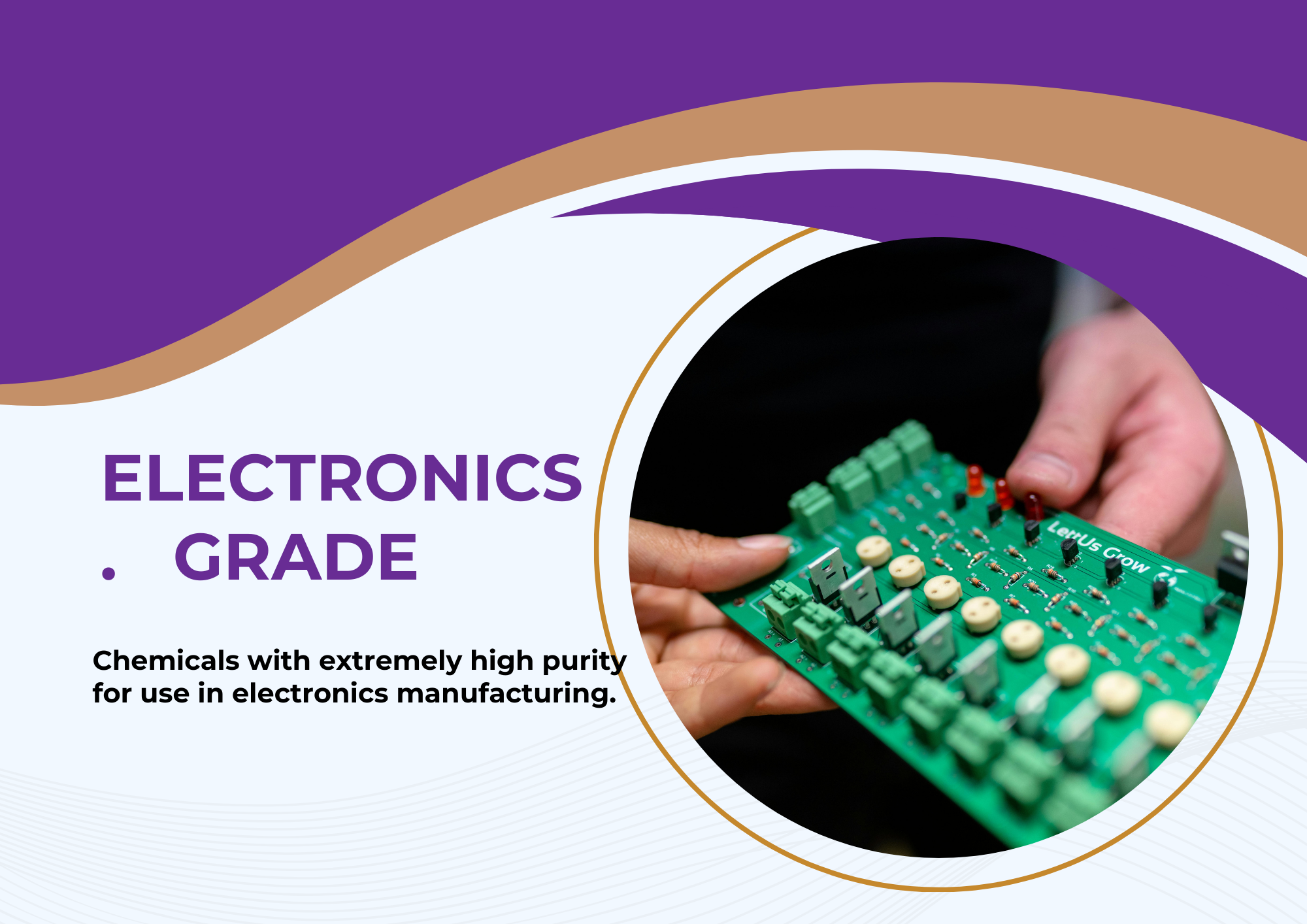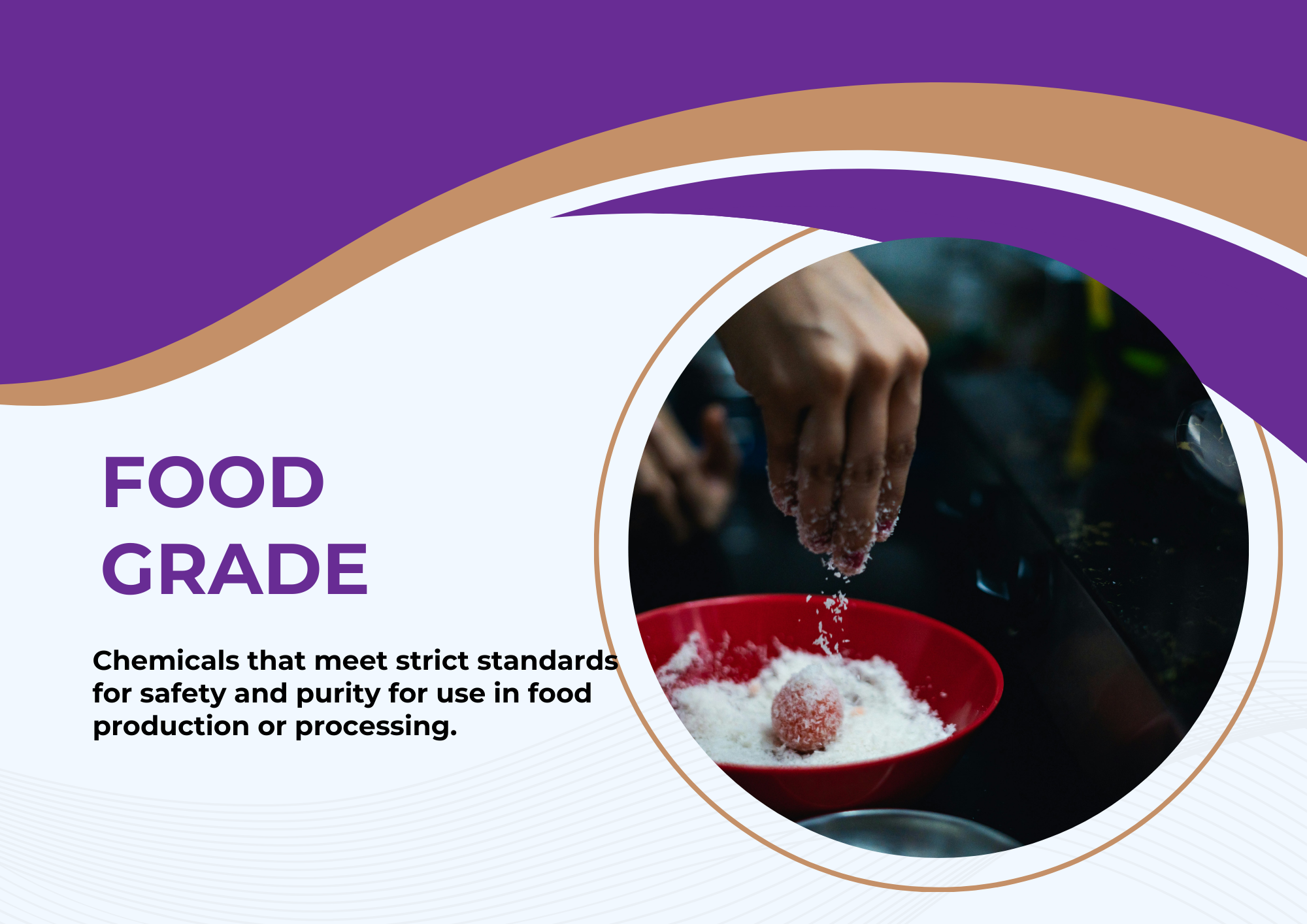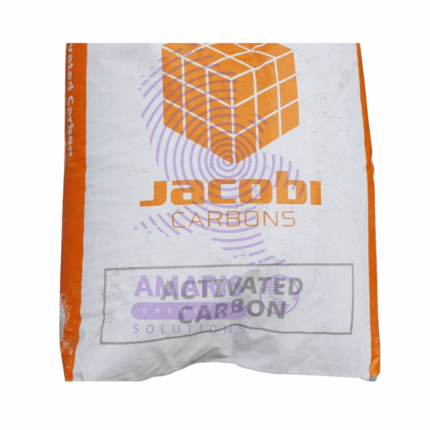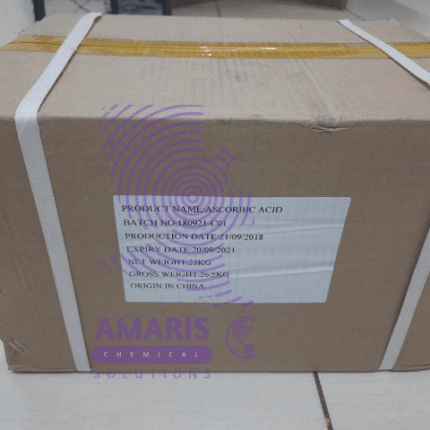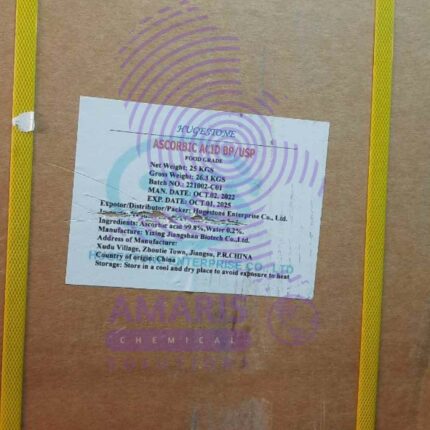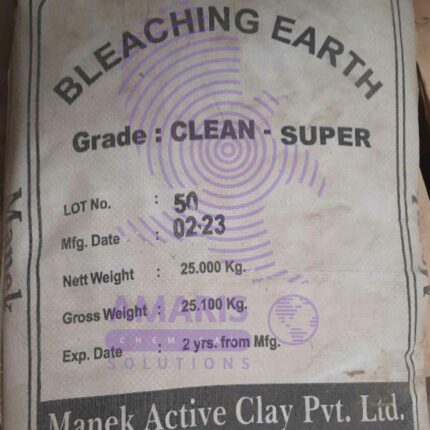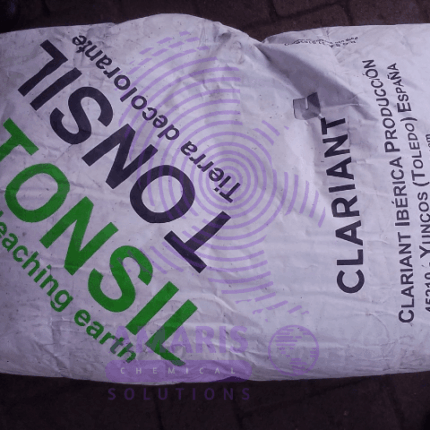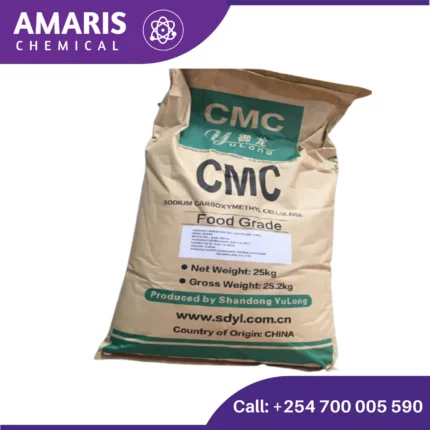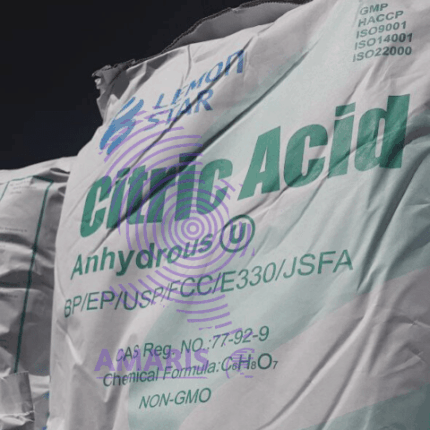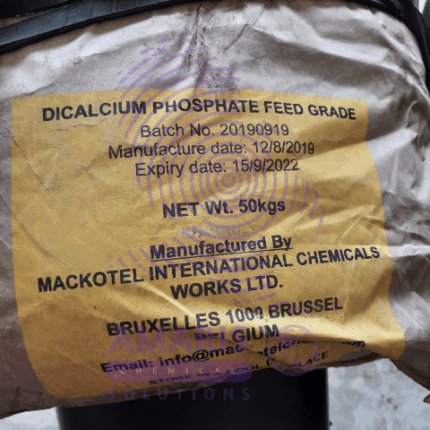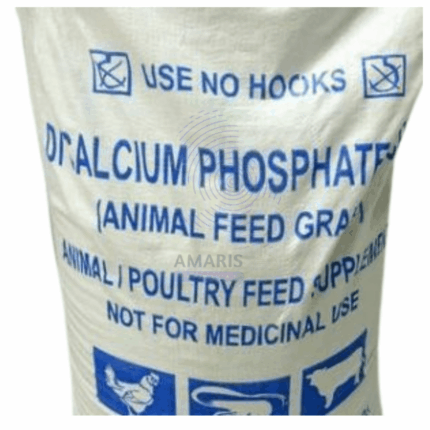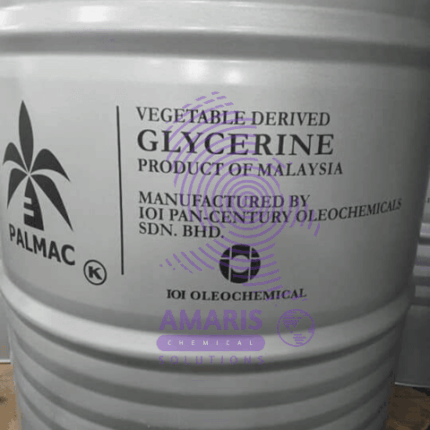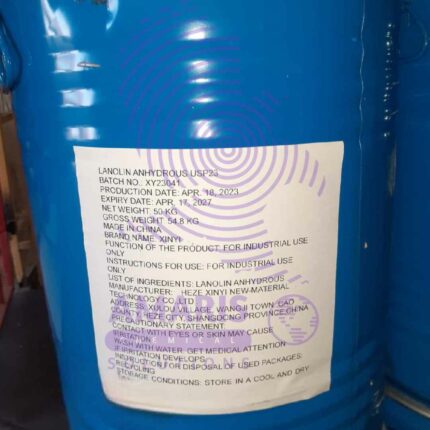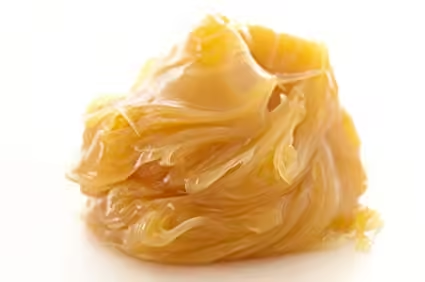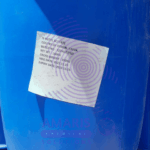
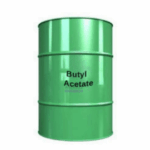
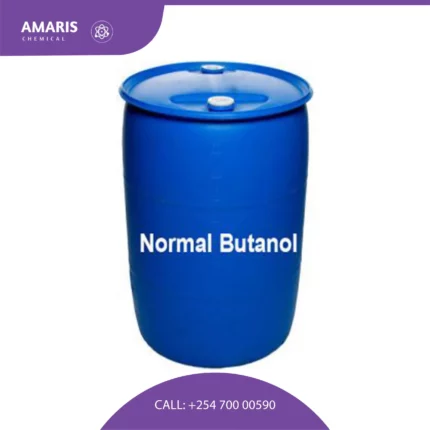

Butyl Acetate
$68,000.00 Original price was: $68,000.00.$67,000.00Current price is: $67,000.00.
Butyl Acetate (n-Butyl Acetate, C₆H₁₂O₂) is a high-performance industrial solvent widely recognized for its excellent solvency, moderate evaporation rate, and pleasant fruity aroma. This clear, flammable liquid is a preferred choice in paints, coatings, and printing inks due to its ability to dissolve resins and polymers effectively while ensuring smooth application and quick drying. Its versatility extends to adhesives, where it enhances bonding strength and drying speed, as well as to the electronics industry, where it serves as a reliable cleaning agent for circuit boards and precision components. Butyl acetate is also valued in pharmaceutical and cosmetic formulations as a flavoring agent and extraction solvent. With its low toxicity and balanced properties, it offers a safer alternative to more aggressive solvents, making it ideal for industrial and commercial applications where both performance and safety are paramount. Proper handling and ventilation are recommended to ensure safe usage.
Butyl Acetate Uses
Paints & Coatings (Major Use)
- Solvent in lacquers, enamels, and varnishes– Provides smooth application and quick drying.
- Used in automotive paints, wood finishes, and industrial coatings– Enhances gloss and flow.
Printing Inks
- Solvent for flexographic and gravure inks– Helps in pigment dispersion and fast drying.
Adhesives & Sealants
- Used in nail polish, glue, and rubber cement– Improves adhesion and drying speed.
Pharmaceuticals & Cosmetics
- Extraction solvent– Used in drug formulations.
- Perfumes & flavoring agent– Adds fruity notes (banana/apple-like scent).
Chemical Manufacturing
- Intermediate in synthesizing other chemicals(e.g., butanol, acetate derivatives).
- Used in plasticizers and resins.
Electronics
- Cleaning agent for circuit boards– Removes flux residues without damaging components
| AVAILABLE PACK SIZE |
198 kg drum |
|---|---|
| APPEARANCE |
Watery/Thin – Low viscosity e.g., ethanol |
1. Basic Identification Attributes
- Chemical Name: n-Butyl acetate (IUPAC: Butyl ethanoate)
- CAS Number: 123-86-4
- HS Code: 2915.33.00 (Esters of acetic acid)
- Molecular Formula: C₆H₁₂O₂ / CH₃COO(CH₂)₃CH₃
- Synonyms: Acetic acid butyl ester, 1-Butyl acetate, BAC
2. Physical & Chemical Properties
- Physical State: Clear, colorless liquid
- Color & Odor: Colorless; fruity, banana-like odor
- Boiling Point: 126.1°C
- Melting Point: -78°C
- Density: 0.88 g/cm³ (20°C)
- Solubility:
- Water: 0.68 g/100 mL (20°C)
- Organic solvents: Miscible with alcohols, ethers, most hydrocarbons
- pH Level: Neutral (~7)
- Vapor Pressure: 10 mmHg (20°C)
- Flash Point: 22°C (closed cup) - Flammable
- Autoignition Temperature: 370°C
- Viscosity: 0.734 mPa·s (20°C)
- Refractive Index: 1.394 (20°C)
3. Safety & Hazard Attributes
- Hazard Class (GHS):
- Flammable Liquid Category 2
- Skin Irritant Category 2
- STOT SE Category 3 (narcotic effects)
- NFPA Ratings: Health: 1 | Flammability: 3 | Reactivity: 0
- Exposure Limits:
- OSHA PEL: 150 ppm (710 mg/m³) TWA
- ACGIH TLV: 150 ppm (713 mg/m³) TWA
- Reactivity:
- Stable under normal conditions
- Incompatible with strong oxidizers, acids, bases
- Attacks some plastics and rubber
4. Storage & Handling Attributes
- Storage Conditions:
- Temperature: <30°C
- Ventilation: Explosion-proof ventilation required
- Humidity: Dry conditions
- Incompatible Materials: Oxidizers, strong acids, alkalis
- Container Type: Steel, aluminum, or approved plastic (HDPE)
- Shelf Life: >2 years if properly stored
- Special Handling:
- Grounding/bonding required during transfer
- PPE: Chemical goggles, gloves (nitrile), vapor respirator above PEL
5. Regulatory & Compliance Attributes
- Regulatory Status:
- EPA: Listed under TSCA
- REACH: Registered
- FDA: 21 CFR 175.105 (indirect food additive)
- Hazard Symbols: Flame, Exclamation Mark
- Transportation Restrictions:
- UN Number: UN1123
- Hazard Class: 3 (Flammable liquid)
- Packing Group: III
- Waste Disposal:
- RCRA: Not listed hazardous waste (D001 if ignitable)
- Incineration preferred
6. Environmental & Health Impact
- Ecotoxicity:
- LC50 (fish): 50-100 mg/L (96h)
- EC50 (daphnia): ~100 mg/L (48h)
- Persistence:
- Atmospheric half-life: ~5 days (OH radical reaction)
- BOD5: 40-60% (readily biodegradable)
- Carcinogenicity:
- IARC: Not classified
- ACGIH: Not classified
- Biodegradability: Readily biodegradable (OECD 301
Personal Protection:
- Respiratory Protection:Use an organic vapor respirator (NIOSH-approved) if ventilation is inadequate or exposure limits are exceeded.
- Eye Protection:Wear chemical splash goggles to prevent irritation.
- Skin Protection:Use chemical-resistant gloves (nitrile or neoprene) and protective clothing to avoid skin contact.
- General Hygiene:Avoid ingestion, inhalation, or prolonged exposure. Wash hands thoroughly after handling.
Handling & Storage:
- Store in a cool, well-ventilated area, away from heat, sparks, and open flames.
- Keep containers tightly sealedto prevent evaporation and flammability hazards.
- Use grounding and bondingto prevent static discharge during transfer.
- Keep away from strong oxidizers, acids, and alkalis.
Spill Management:
- Small spills:Absorb with inert material (vermiculite, sand, or absorbent pads) and dispose of properly.
- Large spills:Evacuate area, contain spill, and prevent entry into drains or waterways.
Inhalation:
- Move to fresh air
- If breathing is difficult, administer oxygenand seek medical attention.
Skin Contact:
- Remove contaminated clothing.
- Wash affected area with soap and water.
- If irritation or dermatitis develops, seek medical help.
Eye Contact:
- Rinse immediately with plenty of water for at least 15 minutes, lifting eyelids occasionally.
- Seek immediate medical attentionif irritation persists.
Ingestion:
- Do NOT induce vomiting(risk of aspiration).
- Rinse mouth with water and drink milk or waterif conscious.
- Seek immediate medical attention.
Fire Hazard:
- Highly flammable(flash point ~22°C / 72°F). Vapors can form explosive mixtures with air.
Extinguishing Media:
- Use dry chemical, CO₂, alcohol-resistant foam, or water spray to cool containers.
- Do NOT use water jet(may spread fire).
- Hazardous Combustion Products:Carbon monoxide (CO), carbon dioxide (CO₂), and irritating fumes.
Protection for Firefighters:
- Wear self-contained breathing apparatus (SCBA)and full protective gear.


 Emollients
Emollients Humectants
Humectants UV Filters
UV Filters Surfactants (cosmetic)
Surfactants (cosmetic) Preservatives (cosmetic)
Preservatives (cosmetic) Fragrances and Essential Oils
Fragrances and Essential Oils Antioxidants (cosmetics)
Antioxidants (cosmetics)
 Solvents (lab)
Solvents (lab) Chromatography Chemicals
Chromatography Chemicals Microbiology and Cell Culture Reagents
Microbiology and Cell Culture Reagents Biochemical Reagents
Biochemical Reagents Inorganic and Organic Standards
Inorganic and Organic Standards Spectroscopy Reagents
Spectroscopy Reagents Molecular Biology Reagents
Molecular Biology Reagents
 Precious Metal Extraction Agents
Precious Metal Extraction Agents
 Plasticizers
Plasticizers Polymerization Initiators
Polymerization Initiators Stabilizers
Stabilizers Monomers
Monomers Fillers and Reinforcements
Fillers and Reinforcements Antioxidants (plastics)
Antioxidants (plastics) Colorants (plastic pigments,Dyes)
Colorants (plastic pigments,Dyes)
 Fertilizers
Fertilizers Plant Growth Regulators
Plant Growth Regulators Soil Conditioners
Soil Conditioners Animal Feed Additives
Animal Feed Additives Biostimulants
Biostimulants
 Dough Conditioners
Dough Conditioners Flour Treatments
Flour Treatments Fat Replacers
Fat Replacers Preservatives (baking)
Preservatives (baking)
 Surfactants (cleaning)
Surfactants (cleaning) Builders
Builders Bleaching Agents
Bleaching Agents Enzymes
Enzymes Solvents (cleaning)
Solvents (cleaning) Fragrances
Fragrances Disinfectant
Disinfectant Metal cleaning
Metal cleaning
 Binders/Resins
Binders/Resins Pigments
Pigments Solvents (paint)
Solvents (paint) Additives
Additives Driers
Driers Anti-Corrosion Agents
Anti-Corrosion Agents Specialty Coatings
Specialty Coatings Functional Coatings
Functional Coatings Application-Specific Coatings
Application-Specific Coatings
 Sealants and Adhesives
Sealants and Adhesives
 Biodegradable Surfactants
Biodegradable Surfactants Bio-based Solvents
Bio-based Solvents Renewable Polymers
Renewable Polymers Carbon Capture Chemicals
Carbon Capture Chemicals Wastewater Treatment Chemicals
Wastewater Treatment Chemicals
 Preservatives (food)
Preservatives (food) Flavor Enhancers
Flavor Enhancers Acidulants
Acidulants Sweeteners
Sweeteners Emulsifiers
Emulsifiers Antioxidants (food)
Antioxidants (food) Colorants (food)
Colorants (food) Nutrient Supplements
Nutrient Supplements Nutraceutical Ingredients
Nutraceutical Ingredients
 Fresh Herbs
Fresh Herbs Whole Spices
Whole Spices Ground Spices
Ground Spices Spice Blends
Spice Blends
 Surfactants(oil)
Surfactants(oil)
 Antibiotics
Antibiotics Active Pharmaceutical Ingredients
Active Pharmaceutical Ingredients Excipients
Excipients Vaccine Adjuvants
Vaccine Adjuvants Nutraceutical Ingredients
Nutraceutical Ingredients Solvents (pharmaceutical)
Solvents (pharmaceutical)
 Automotive chemicals
Automotive chemicals Pyrotechnic Chemicals
Pyrotechnic Chemicals


 Vulcanizing Agents
Vulcanizing Agents Accelerators & Retarders
Accelerators & Retarders Antidegradants
Antidegradants Reinforcing Agents
Reinforcing Agents Plasticizers & Softeners
Plasticizers & Softeners Fillers & Extenders
Fillers & Extenders Blowing Agents
Blowing Agents Adhesion Promoters
Adhesion Promoters
